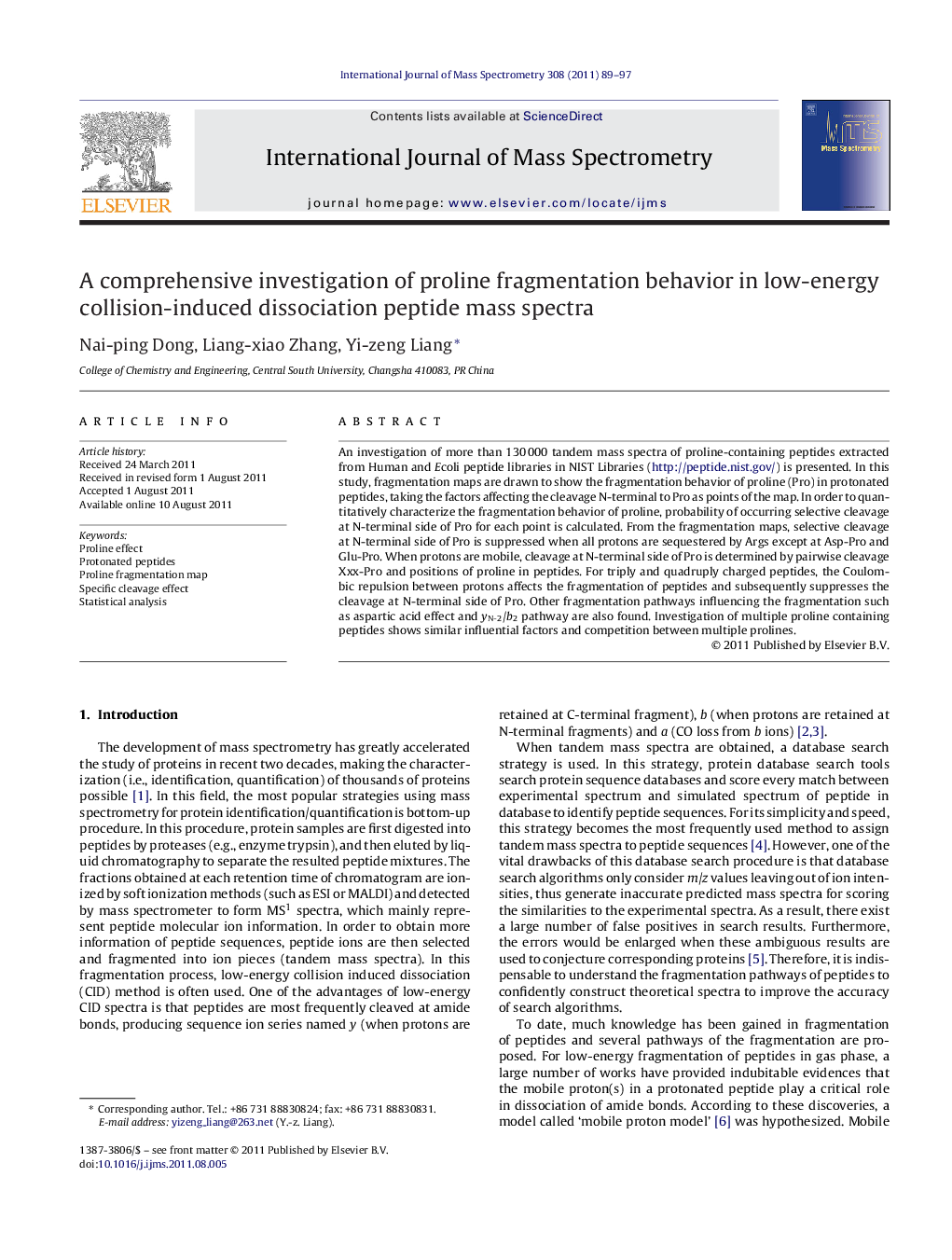| Article ID | Journal | Published Year | Pages | File Type |
|---|---|---|---|---|
| 1194366 | International Journal of Mass Spectrometry | 2011 | 9 Pages |
An investigation of more than 130 000 tandem mass spectra of proline-containing peptides extracted from Human and Ecoli peptide libraries in NIST Libraries (http://peptide.nist.gov/) is presented. In this study, fragmentation maps are drawn to show the fragmentation behavior of proline (Pro) in protonated peptides, taking the factors affecting the cleavage N-terminal to Pro as points of the map. In order to quantitatively characterize the fragmentation behavior of proline, probability of occurring selective cleavage at N-terminal side of Pro for each point is calculated. From the fragmentation maps, selective cleavage at N-terminal side of Pro is suppressed when all protons are sequestered by Args except at Asp-Pro and Glu-Pro. When protons are mobile, cleavage at N-terminal side of Pro is determined by pairwise cleavage Xxx-Pro and positions of proline in peptides. For triply and quadruply charged peptides, the Coulombic repulsion between protons affects the fragmentation of peptides and subsequently suppresses the cleavage at N-terminal side of Pro. Other fragmentation pathways influencing the fragmentation such as aspartic acid effect and yN-2/b2 pathway are also found. Investigation of multiple proline containing peptides shows similar influential factors and competition between multiple prolines.
Graphical abstractFigure optionsDownload full-size imageDownload high-quality image (162 K)Download as PowerPoint slideHighlights► More than 130 000 proline-containing peptides mass spectra are investigated. ► Proline effect could be suppressed by chemically driven specific effect. ► Proline effect is significantly affected by position of proline in peptides. ► New interpretation for proline effect is proposed.
